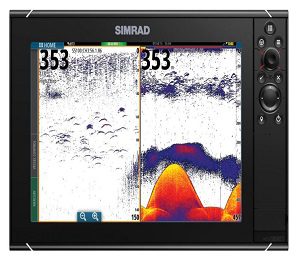 What Is The Frequency Of Fish Finder
What Is The Frequency Of Fish Finder
The fish finder is not a piece of equipment that works like a camera to capture the images of the underwater environment. Instead, it is similar to the radar that sends a powerful signal, and the response is recorded when they bounce back after striking something.
The fish finder sends the sound waves into the water because the electromagnetic radiation can not penetrate the water. The fish finder uses a definite frequency to locate the structure and the fish underwater.
There is more than one frequency that the fish finder can use, and it depends on the purpose that you are using it for. In this article, we shall learn about the frequency of the fish finder.
Why Does The Frequency Of Fish Finder Matter
The frequency of the fish finder matters a lot because it is the basis of the sonar. The sound signals are produced by the transducer that travels and bounces, which depends on the frequency. It defines how far the fish finder can read and how few objects can appear on the screen. There are three different frequency ranges in the fish finder, and depending on the type, the fish finder can produce one or more than one frequencies at a single time.
These are the standard frequency ranges of the fish finder.
- 50 kHz (low frequency)
- 80 to 100 kHz (medium-frequency)
- 200 to 600 kHz (high frequency)
Most fish finders work between only two frequencies of low and high. Some fish finders can regulate the frequency, and you can select the frequency you want.
What Is The Frequency Of Fish Finders?
Most modern fish finders have more than one frequency available, and they can be adjusted based on preferences. The low frequency is used to scan the large area and when the responses are recorded. You can do a high-frequency survey to find out exactly what it is.
There are also fish finders that simultaneously work between high and low frequency to understand better and be aware of the underneath environment and the surrounding.
The most modern feature is the CHIRP which sends powerful signals of mixed frequencies that scan a large area with greater accuracy and efficiency. They can analyze the bottom type, fish type, and anything.
How Does Frequency Impact The Range?
The frequency is inversely proportional to the range means that when the frequency is increased, the field gets low. This is understandable because when the frequency is increased, the waves’ amplitude is decreased, which means that they can get flat after covering less distance.
On the other hand, for the low frequency, the wave’s wavelength is increased, and they can travel longer.
Most anglers use a low frequency of 15 to 20 kHz to get a general idea about the terrain and the potential area where they can find the fish. The 50 kHz can go hundreds of feet and can be used to determine the bottom depth and scan to a large extent. The high-frequency saves can go for just 50 feet at maximum, and they are used to identify the fishes.
How Does Frequency Impact Visibility?
Although the frequency has adverse effects on the range, it is directly proportional to the accuracy. High-frequency waves can detect much smaller signals and are used to identify the types of fishes and their size.
The signals that appear as a single entity on the low-frequency fish finder will appear as separate fishes on the high-frequency sonar. High-frequency fish are used to pinpoint the location of the fish with their exact type.
Final Thought
The frequency of the fish finder matters the most because it is the benchmark of the sound waves. The expected frequency of the fish finder can be 50 kHz for low settings and general scan to 200 kHz for specific area scan with high accuracy. Different kinds of fish finders simultaneously send different frequencies to understand the environment best. The low frequency can travel much more profoundly than high-frequency waves but are less accurate.
- What Do You Need for Fishing - August 18, 2022
- How to Find Offshore Fishing Spots - August 18, 2022
- What to Use for Trout Fishing - August 17, 2022

 What Is The Frequency Of Fish Finder
What Is The Frequency Of Fish Finder